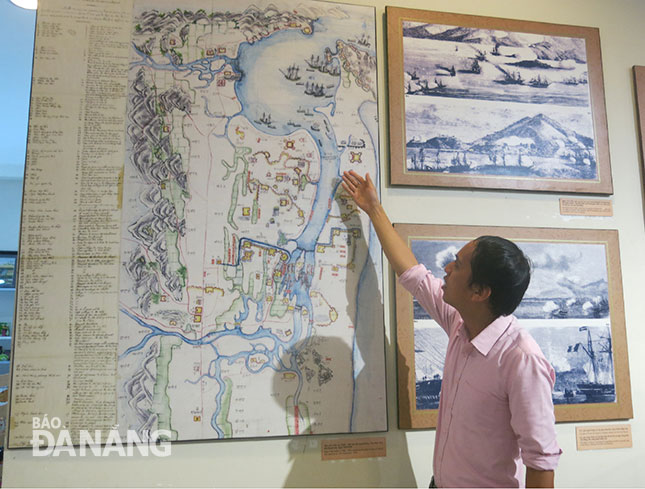Dien Hai Citadel shows off city's cultural essence
Experiencing the vicissitudes of the history, Da Nang’s over 160-year-old Dien Hai Citadel, which was recognised as a special national-level relic site last year, remains its important position in the spiritual and cultural local life.
 |
| Local high school pupils visiting the Museum of Da Nang |
Boasting its both tangible and intangible cultural values, the citadel is vivid evidence of the undaunted courage and indomitable fighting spirit of Da Nang’s soldiers and its residents during their battles against the French-Spanish coalition forces in the 1858 - 1860 period.
Situated on the western side of the Han River, the Dien Hai Citadel was originally called Bao Dien Hai Fortress during the reign of Emperor Gia Long. It was originally built near Da Nang’s estuary in 1813 under the reign of Emperor Gia Long. Then, in 1823, it was moved inland, and rebuilt in brick on a hillock during the reign of Emperor Minh Mang. It was renamed the Dien Hai Citadel in 1834.
In 1847, during Emperor Thieu Tri’s reign, the citadel’s perimeter was expanded to 556m, with a surrounding 3m-deep moat and over 5m-high walls. The Vauban-style brick citadel had 2 gates, the main one facing south and the other facing east.
After nearly 200 years, most of the Dien Hai Citadel has now been destroyed by war and time, and only a few relics are left, including its walls on the west and east sides and two 19th century cannons from the Nguyen Dynasty. The remains of the citadel are located at 24 Tran Phu Street, Thach Thang Ward, Hai Chau District. The Museum of Da Nang incorporates the reconstructed walls of the citadel, and the site has been restored, and it is expected to become an attraction for both domestic and foreign visitors.
The citadel was one of the most important fortresses in Viet Nam in the 19th century, and was recognised as a national historical relic on 16 November 1988 by the Ministry of Culture and Information.
A map of the 1858 - 1860 battles, which is now on display at the museum, shows that, during the Nguyen Dynasty, a series of fortresses were built at gateways to Da Nang. Notable amongst them were the Tran Duong Military Post on the Son Tra Penisula, the Phong Hai Fortress at the foot of the Son Tra Mountain, the An Hai Citadel and military posts of Hoa Khue and My Thi along the eastern bank of the Han River, the Dien Hai Citadel and the military posts of Thac Gian and Lien Tri on the western bank of the river.
 |
| The map of the 1858 - 1860 battles on display at the museum |
Famous domestic historian Duong Trung Quoc remarked that the citadel is one of the Vauban-style fortresses to have been built in Viet Nam, especially after the reigns of emperors Gia Long and Minh Mang. However, the citadel is amongst a few of its kind that have exited to date across the country. It is the fact that, the Hue and Dien Hai citadels are the only two left in Central Viet Nam.
The Chairman of the National Heritage Council, Professor Luu Tran Tieu, remarked that the Dien Hai Citadel shows of special national historical values as this site relates to a historic event which marks an important change in the national history.
Especially, thanks to its strategic geographic position, the citadel also plays a vital role in the defensive system at the gateway to Da Nang against both French and US invaders.
Mr Nguyen Hoang Long, the former municipal People’s committee Vice Chairman, the venue is the great pride of the city’s citizens. He also highlighted the great significance of the citadel in further educating the younger generations in the locality about the spirit of ardent patriotism.
In addition, once completely upgraded, this site will be more attractive to both locals and visitors, especially those who show keen interest in conducting their historical and cultural research activities.